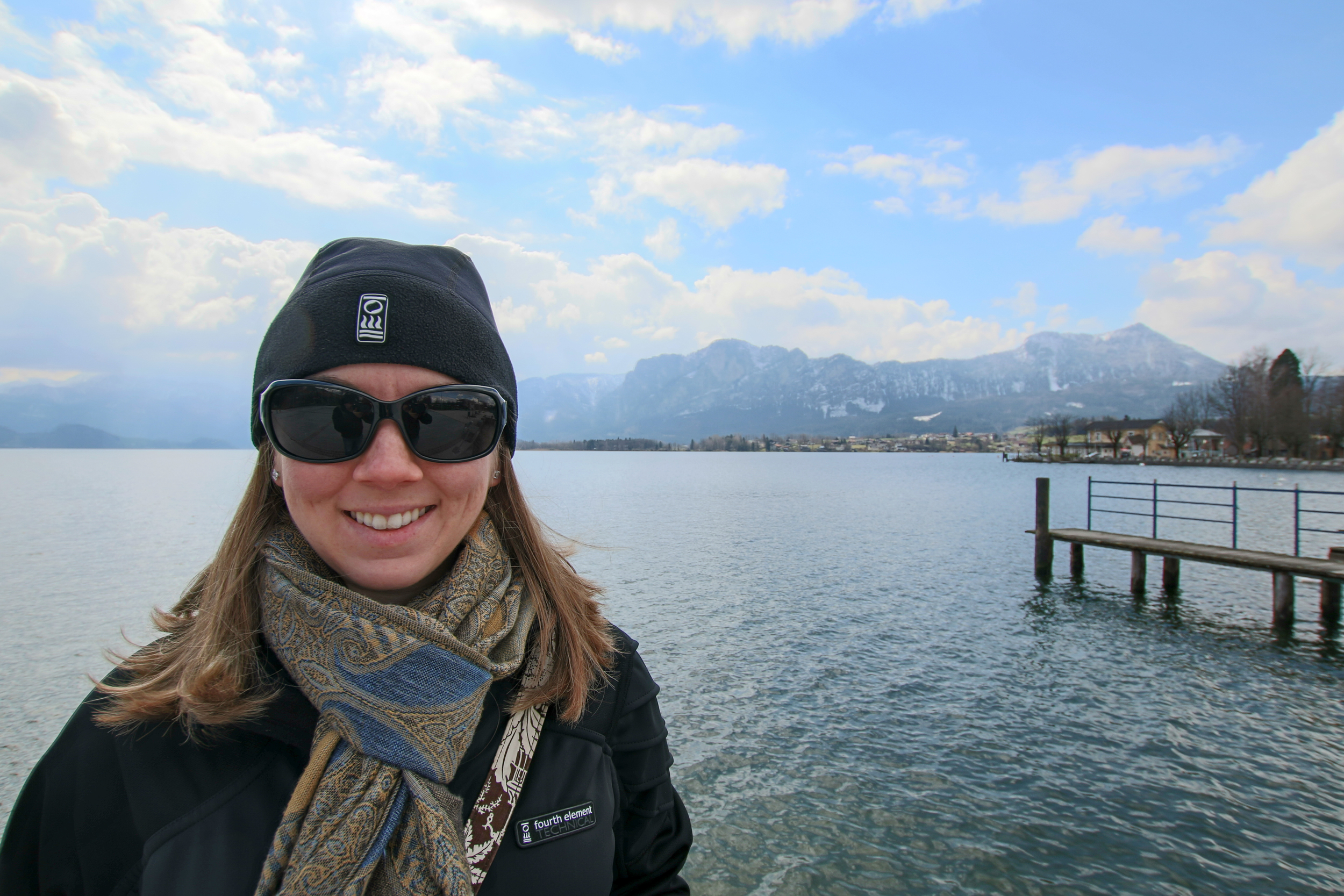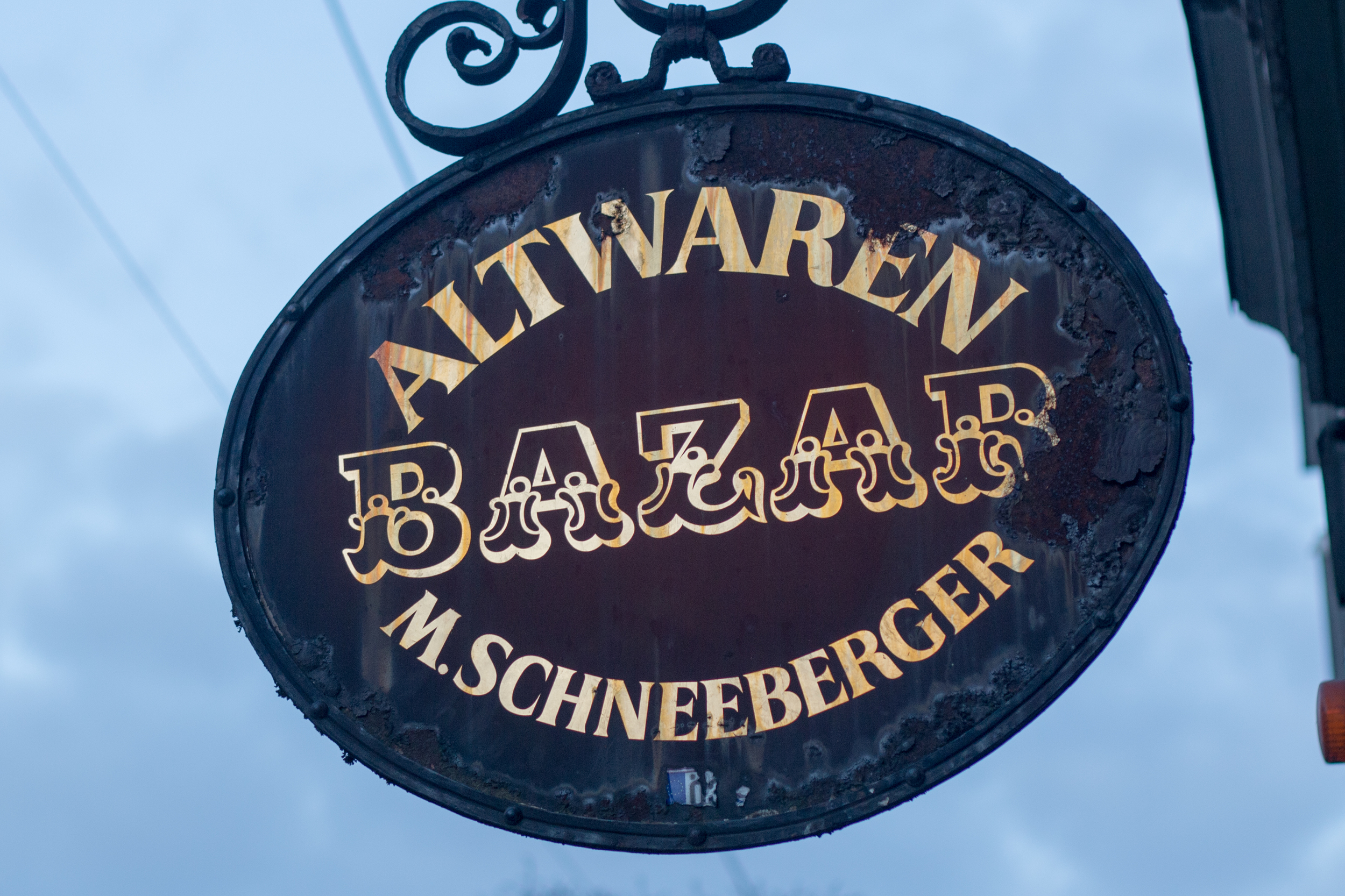Salt Mine Tour in Austria
/Salzburg = Salz + burg. Quite literally, salt castle. Salzburg may be famous for it's starring role in the Sound of Music, but it has a long, long, long history with salt, salt mining, and it was the profits from the salt mining that financed the building of the city. Now, you may know that Aaron and I are never ones to pass up a mine tour, and we knew that this was one thing we had to do on our weekend getaway to Austria.
Our Sunday started off with Easter Mass at the St. Michaels bascilla in Mondsee, halfway between Attersee and Salzburg. If you are a fan of the movie, the Sound of Music, you might recognize it as the church from the wedding. It's absolutely stunning and the small town of Mondsee is so perfectly quaint and picturesque. I could have spent all day here, sipping coffee and eating delicious Austrian cakes while taking in the alps, the lake, and the glorious sun that we were blessed with that day. Alas, I am not traveling alone, and Aaron would have looked at me like I was nuts had I suggested we do this. We compromised with a walk along the lake and through a small portion of the town, and then we were on our way to our next stop.
St. michael's in Mondsee
We took the scenic route from Mondsee, back along Attersee, before heading down to Hallein, home of the Hallein Salt Mine. If given the opportunity and enough time, we always prefer the scenic route and this time did not disappoint. We got to see some stunning landscapes, beautiful lakes, and it even snowed!
Once we got to Hallein mine, we parked and bought tickets. Luckily, there was a tour starting in 20 minutes. Just enough time to visit the bathroom and grab a quick snack. The tours are offered in dual German/English, which is incredibly useful. Once our tour time was up, we donned miners gear, which consisted of large, drawstring pants and an oversized jacket. Special shoes are not required, but study shoes are helpful. Flip flops and thin ballet flats should probably be avoided for both safety and comfort.
Once everyone in the group had their mine clothing on, it was time to enter the mine! We headed out along an elevated walkway and down some stairs where we then were to board the tram that would carry us into the mine. But before we could get on, we had to get our picture taken (it seems like they've taken some pointers from Disney World). The tram is essentially a bench on a platform that you straddle. After everyone was on, the engine started and the tram began its journey into the mine.
At this point, the tunnel is pretty small. Even just slightly extending your arm could garner injury since the tunnel wall is close and the ceiling so low. The ride lasted only a few minutes. Once we were well within the mine, we disembarked from the tram and walked about couple hundred yards to a large chamber. One thing that struck me about this mine was how silent it was. In a lot of the mines I've been in, sounds echo somewhat. Not here. No echos at all.
i'M IN aUSTRIA! No, I'm in Germany! Wait, I'm in both!
Throughout the tour, there are screens that play short videos telling the story of the mine. Starting over 3000 years ago, salt was mined here by the Celts, but it wasn't until the 1500s that the salt was rediscovered and more intensive mine works began. At that time, the bishop of Salzburg essentially owned the mine, the profits from which were used to build cathedrals, palaces, and gardens in Salzburg. A fair amount also remained in the hands of the bishop. The videos are a little hokey, but it easily tells the story so that even children can understand. They are in German, but have English and Italian subtitles. At two points in the tour, you actually cross an international border. Here, the mine is close to Germany, and much of the mine lies under German lands. Of course, we made sure to get the obligatory picture of standing in two countries at once!
The second slide we went down. It was awesome!
In former times, the miners used slides to get into the mine to work. While they don't fully explain how that actually got out of the mine at the end of the day, I think it's safe to assume it was with the help of stairs or ladders. Today, they have refurbished a couple of the slides for tourists to try out. Unfortunately, I didn't see stairs or a way around them so to continue on with the mine tour, you must do the slides. Although they may look steep, they really aren't. But the are a ton of fun! You go down 2 or 3 people at a time, so Aaron and I went together. There are two slides in this mine and the second one is bigger than the second. On both, I giggled like a little kid.
lake in the mine to show how the salt was extracted.
There is also a boat ride on this tour! But, it's to help explain one of the most profitable methods of extracting salt from the mine. Essentially, a large cavern is filled with water and allowed to sit for a couple of months. During this time, the water leeches the salt out of the rocks. After 6 - 7 weeks, the water is turned to brine with a salt content of about 27% (to put this into perspective, the ocean has a salt content of 3%), which is then drained out of the mine and sent to the town of Hallein below the mountain. There the water is evaporated off and the salt is left behind. The boat tour was a little cheesy with special lighting and music playing, but it was still kind of cool.
At this point, there is one last cavern with a screen that shows the end of the bishops life. This is the end of the tour and to get out of the mine, there is a large escalator (no stairs to climb!) before you ride the tram back out. Looking back, Aaron and I had mixed feeling about this tour. It would be great for kids, but you are really limited in how much of the mine you see. And the parts that you do see are heavily modified and not at all authentic. I would say that if you're in the area and looking for something to do for a couple of hours, the mine tour at Hallein is a good option, especially if you have school aged children.
Operating in conjunction with the Hallein mine are two other salt mines, but they are not open year round. Perhaps next time we are in Austria, we will stop at one of the others. Below is some information if you are thinking about visiting yourself:
Get There: Ramsaustraße 3, 5422 Bad Dürrnberg, Austria (about 25 minutes south of Salzburg)
Ticker Prices: 19€ adults, 9.50€ children, but they do have family options available
Opening Hours: year round, from 9AM - 5PM spring through fall, winter hours differ
Highlight: Slides to get to deeper levels of the mine
For the most up to date information, visit their website
That night we stayed in Salzburg. Being Easter Sunday, most things were closed. Salzburg did not really impress me all that much, perhaps we didn't see the right stuff. It's a large, sprawling, urban city, but despite it's popularity as a tourist city (mostly for the Sound of Music tours), it didn't strike me as a city that I could spend a lot of time in exploring. But hey, I could be wrong. When the shops and cafes are open, and the Mirabell gardens are in bloom, perhaps it's a really great city to visit. And if you've been and think I really missed the mark on Salzburg, feel free to let me know! We would be willing to give it a second chance. Some of the pictures from our walk to and from dinner are in the gallery below.
Linked up with:




























